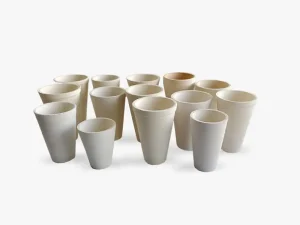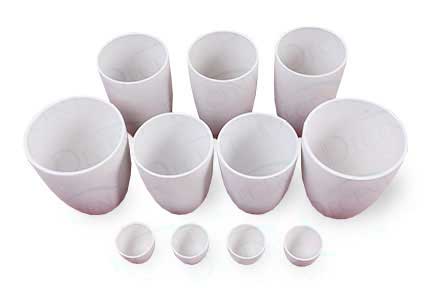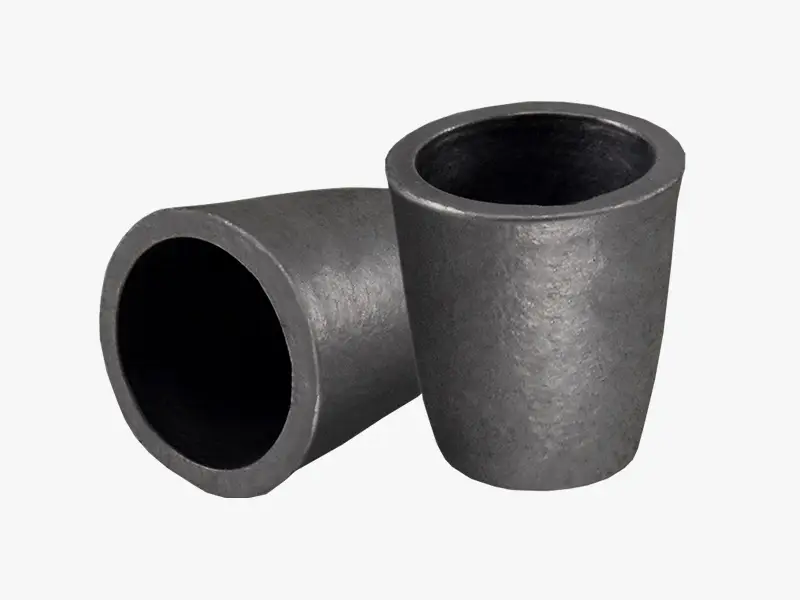Choosing the Right Crucibles: Fireclay, Ceramic, or Graphite for High-Temperature Success
Crucibles are fundamental tools across metallurgy, analytical chemistry, and materials science, designed to withstand extreme temperatures for processes like melting, calcination, and fire assay. Among the diverse materials used, clay-based crucibles—specifically fireclay, high-temperature ceramic, and clay graphite—remain vital due to their refractory properties and practicality. Selecting the correct type is critical for performance, accuracy, and cost-efficiency. This guide details their key differences to inform your decision.

1. Fireclay Crucibles: The Cost-Effective Workhorse
-
Composition: Primarily natural fireclay (aluminosilicate) with minor fluxes like feldspar. Natural iron impurities give them a characteristic tan, brown, or reddish color.
-
Properties: Gritty, porous texture. Lighter weight compared to alternatives. Max operating temperature: 1,400–1,500°C. Moderate thermal shock resistance – rapid cooling can cause cracking. High porosity (~15-20%) allows absorption of fluxes and metals.
-
Chemical Resistance: Susceptible to erosion by strong basic fluxes (e.g., sodium carbonate). Prone to metal infiltration (e.g., lead, copper), leading to contamination. Typical lifespan: 5-10 uses.
-
Best For: Routine gold/silver assays with lower-melt, less aggressive fluxes where cost per unit is a primary driver. General melting where absolute purity is less critical. DECENT fireclay crucibles offer reliable performance within their limits.

2. High-Temperature Ceramic Crucibles: Precision & Durability
-
Composition: Engineered from purified alumina (Al₂O₃) or zirconia (ZrO₂) with synthetic binders (e.g., silica sol).
-
Properties: White, off-white, or gray color with a smooth, vitrified, dense finish. Hard, scratch-resistant surface. Low porosity (<5%). Heavier than fireclay. Max operating temperature: 1,600–1,800°C. Excellent thermal shock resistance – tolerates rapid heating/cooling.
-
Chemical Resistance: Superior resistance to both acidic and basic fluxes. Minimal metal infiltration due to dense structure. Significantly longer lifespan: 20–50+ uses with care.
-
Best For: Demanding fire assay (especially platinum group metals – PGMs), high-purity melting, analytical chemistry, and research. Essential for high-flux loads, temperatures exceeding 1500°C, and applications requiring contamination-free results. DECENT high-alumina ceramics are engineered for precision and longevity.

3. Clay Graphite Crucibles: Thermal Conductivity Champions
-
Composition: Blend of refractory clay (fireclay/kaolin) and natural flake graphite (30-70%). May include silicon carbide (SiC) for enhanced performance.
-
Properties: Dark gray to black color, smooth to granular texture, sometimes with a metallic sheen. High thermal conductivity enables rapid, uniform heating. Excellent thermal shock resistance. Good mechanical strength at temperature. Max operating range: Typically 900–1600°C.
-
Chemical Resistance: Graphite provides non-wetting properties, minimizing metal sticking and aiding clean pours. Good resistance to many slags and non-ferrous metals. Susceptible to oxidation of graphite at high temps and attack of the clay binder by strong basic fluxes.
-
Best For: Efficient melting and holding of non-ferrous metals (copper, brass, aluminum, gold, silver) in foundry and industrial settings. Valued for fast melting times and energy efficiency. DECENT clay graphite crucibles deliver robust performance for demanding melting operations.
Selecting the Right Crucible: Key Considerations
-
Application: Fire assay (PGMs/high flux)? Choose high-temp ceramic. Routine Au/Ag assay (low flux)? Fireclay may suffice. Efficient non-ferrous melting? Clay graphite excels.
-
Temperature: Exceed 1500°C? High-temp ceramic is mandatory. Below 1500°C? Fireclay or ceramic are options. Metal melting? Match clay graphite to the melt temp.
-
Chemical Environment: Aggressive fluxes? High-temp ceramic offers best protection. Basic fluxes? Avoid fireclay. Oxidizing atmosphere? Limits clay graphite lifespan.
-
Purity Requirements: Zero contamination? High-temp ceramic is essential.
-
Cost vs. Lifespan: Fireclay has lower upfront cost but shorter life. Ceramic has higher initial cost but superior longevity. Graphite balances cost and performance for melting.
-
Thermal Cycling: Frequent rapid heating/cooling? Prioritize high-temp ceramic or clay graphite.
Qingdao Decent Group: Your Partner in High-Temperature Solutions
Understanding these crucible differences ensures optimal results, whether in precise fire assay or efficient metal melting. DECENT crucibles—spanning fireclay, high-performance ceramics, and robust clay graphite—are manufactured to stringent standards, delivering the reliability your operations demand. We provide expert guidance to match the right crucible type to your specific temperature, chemical, and application requirements, maximizing performance and cost-effectiveness.
Choose wisely. Choose DECENT for dependable high-temperature performance.
Internal Link Suggestions:
- Explore our full range of DECENT Fire Assay Consumables
- View DECENT Fire Assay Crucibles and Magnesia Cupels
- Learn about Qingdao Decent Group’s Manufacturing Facilities
